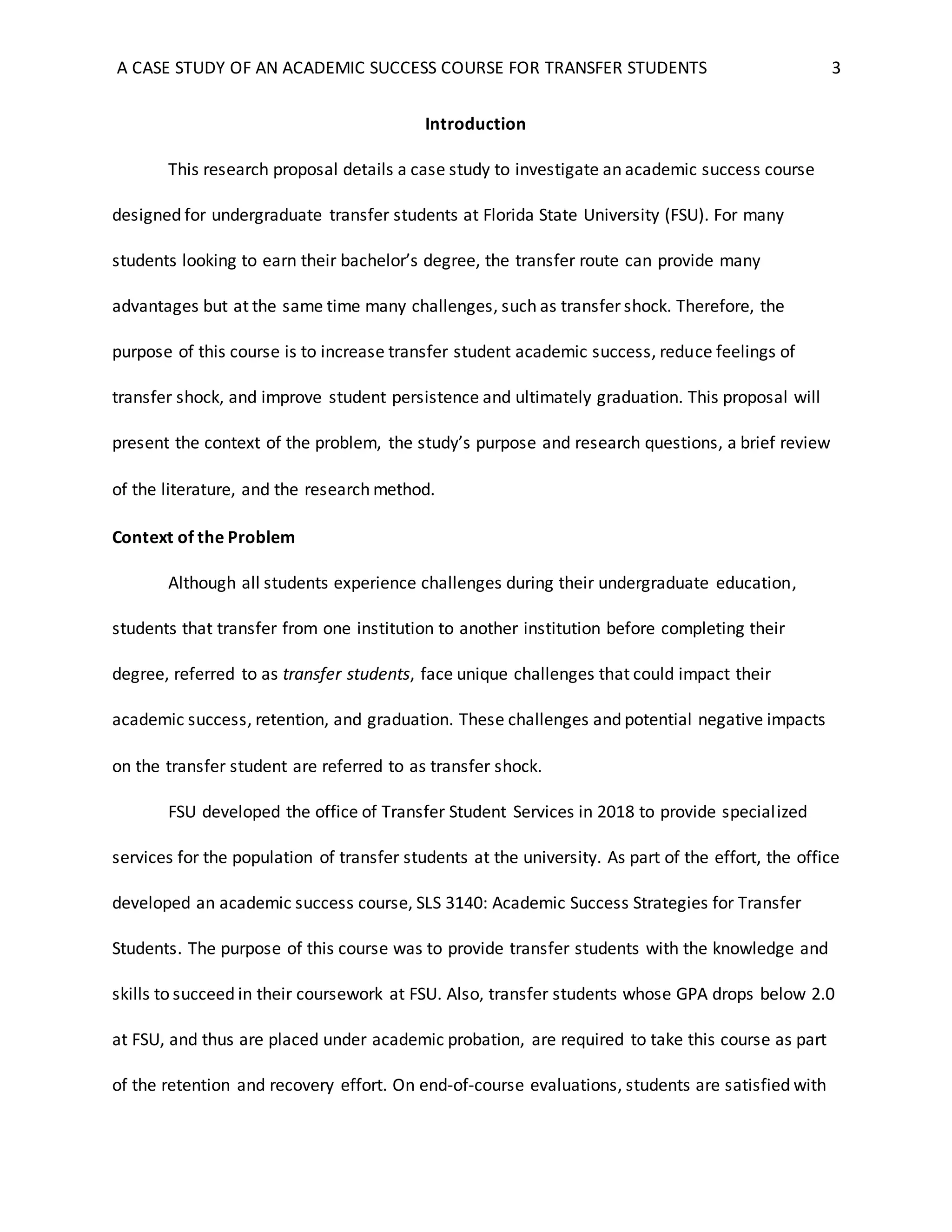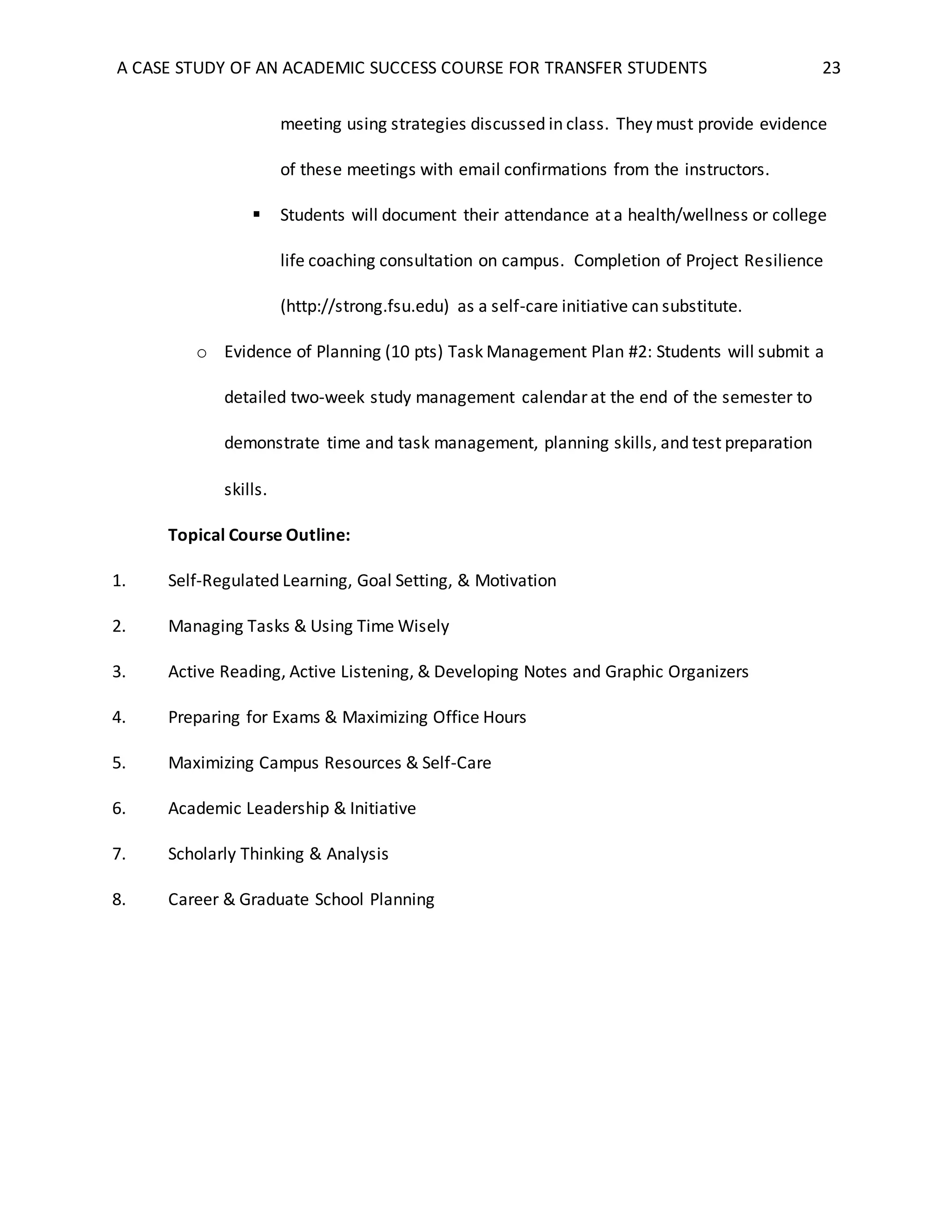This research proposal details a case study of an academic success course for undergraduate transfer students at a university. The purpose is to evaluate how the course assists transfer students with persistence, academic success, and feelings of transfer shock. The study will collect data through student and instructor surveys, interviews, artifact analysis, and observations. It aims to answer how the course helps with persistence and success, how it impacts feelings of transfer shock and skills, and instructor perceptions of its effectiveness. The results could be used to improve the course and support transfer students.






















